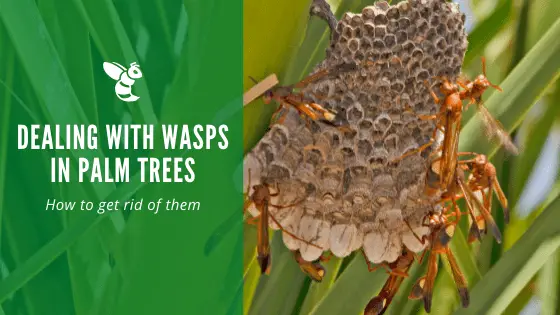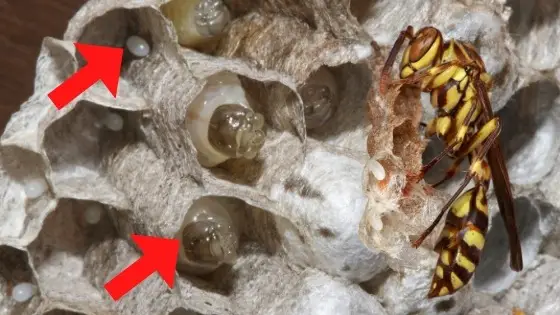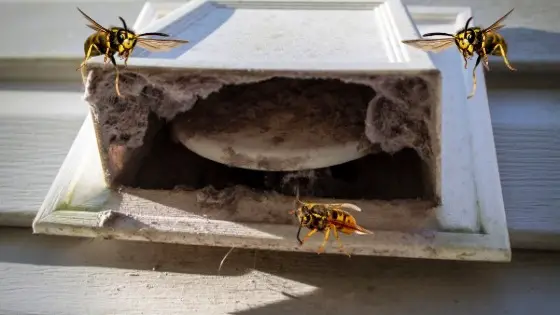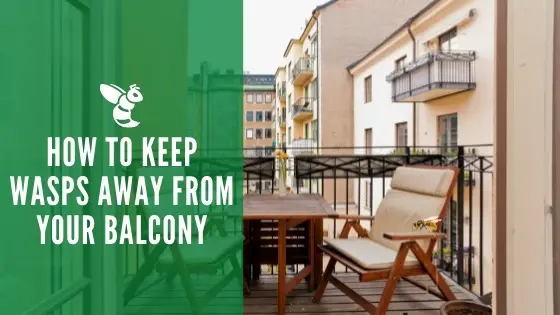Dealing With Wasps in Palm Trees

If you live in a part of the country where there are palm trees, you may notice that wasps will often buzz around these areas. They may be aggressive, or they may only be going about their business.
If you’re still planning your landscaping, you may want to think about avoiding palm trees as part of your plan. If you currently have palm trees and want to figure out how to get rid of wasps or a wasp nest, there are plenty of options that you can choose to keep them at bay; follow our short guide.
Do Palm Trees Attract Wasps?
Palm trees can provide an adequate cover for wasps looking for a safe place to build a nest. The large, broad leaves can protect the nest from nasty weather like rain and wind. It’s very much like wasps building a nest under the eaves of your home.
Not only do the palm fronds attract wasps but so do the flowers. Palm trees may bear thousands of little white flowers multiple times a year that attract bees and wasps that are looking to pollinate them.
If you live in a southern climate where temperatures are warm throughout the year, and palm trees are prevalent, you’re likely going to be sharing your space with wasps at some point.
Types of Wasps in Palm Trees
There are a few different varieties of wasps that you’ll most frequently find in palm trees and other trees. If you see a wasp buzzing around a tree, don’t assume that there’s a nest inside of it.
They may just be passing through or looking for a meal. It takes a little bit of time and assessment to determine if wasps are setting up shop inside of your palm tree.
Keep in mind; palm trees are generally found in Florida, Texas, California, Arizona, Alabama, and the Carolinas. You won’t have a wasp problem in a palm tree up north.
Common wasps found in the US’s southern parts include paper wasps, cicada killers, bald-faced hornets, and yellow jackets.
Paper wasps tend to build their nests hanging from a high-up surface like the eaves of a building or a tree. Gall wasps like to nest in trees, and they can even affect the tree’s health that they’re living.
It’s crucial to determine what kind of wasp you’re dealing with in your palm trees; with this information, you’ll be able to decide if they need to be removed for the health of the tree. A mild infestation usually won’t cause enough damage to kill the tree, but you have to keep a close eye on the situation.
How Do You Get Rid of Wasps in Palm Trees?
As a tree owner, you don’t have to worry about removing a wasp nest in a tree unless you feel that the nest is a problem. If the nest is high enough, it’s not affecting the tree, and it’s not affecting humans, then wasps can be beneficial to nature.
Removing a nest from a tree yourself can be dangerous, so it’s best to use extreme caution. For one, the nest is probably very high up. You’ll probably have to use some method of climbing up into the tree to spray the nest or remove it.
The best time of day to spray a wasp nest is in the evening when the sun has gone down and the temperatures are close to 60 or below. This means that wasps will be safely tucked inside, which is when they will be the calmest.
June is a good time of year to remove the nest, as the temperature outside is optimal for safe removal.
Once the nest has been sprayed thoroughly, watch to see if wasps are coming back the next day. If you sprayed correctly, you should have killed a large number of the wasps on contact or by them crawling through the pesticide product as they attempted to get out.
You may need to spray again the next day or the day after if you still see activity. If the nest is accessible, attempt to safely remove the nest once you see that the activity has stopped. This will prevent any infestation or revival of the nest.
Conclusion
If you are having problems with wasps in your palm trees, determine if this is a situation that a professional should take care of promptly. You don’t want to have wasps too close to your home or nearby where children and pets play.
Since wasps can get aggressive, you need to be careful of someone getting stung. If the palm trees are in an area near homes or parks, think about letting the wasps remain there. They do help control the insect population, and they assist with the pollination of flowers.



